
Chronic absenteeism, defined as missing 10% or more of school days, is a critical issue that affects student success and overall school performance. It can lead to lower academic achievement, increased dropout rates, and wider achievement gaps. Addressing this problem requires understanding the underlying causes, leveraging data and analytics, and implementing multifaceted approaches.
Understanding the Reasons Behind Absenteeism
To tackle chronic absenteeism, it's crucial to understand why students miss school. Here are the most common reasons:
- Illness: Physical health issues like colds, flu, or chronic conditions.
- Disconnection: Feeling bored, uninterested, or demotivated.
- Anxiety: General anxiety around safety or being away from home.
- Social Conflicts: Uncomfortable issues with other students.
- Test Avoidance: Skipping days or periods when tests are happening.
- Peer Influence: Friends' attendance patterns influencing behavior.
- Academic Struggles: Being overwhelmed with academic challenges.
- Family Responsibilities: Caregiving or work duties at home.
- Home Conflicts: Issues such as homelessness or family disputes.
- Disciplinary Actions: Suspensions leading to missed days.
- Perception: Underestimating the importance of regular attendance.
- Vacations: Family trips scheduled during school days.
- Teacher Absenteeism: The presence of substitute teachers impacting engagement.
- Environmental Factors: Extreme weather, natural disasters, etc.
Research-Backed Strategies for Combating Chronic Absenteeism
It's clear that there are a lot of factors influencing attendance, and it's can be overwhelming to tackle them. Here is a comprehensive list of research-backed strategies to provide inspiration, aligned with a Multi-Tiered Systems of Support (MTSS) framework.
Tier 1: Universal Prevention
-
Internal Operations and Systems
- Measurement and Tracking: Set up reports to track daily attendance and identify trends across subgroups.
- Goal Setting: Establish and monitor attendance goals.
- Attendance Team: Form a dedicated team to address attendance issues.
- Information Gathering: Conduct surveys with students and families to understand the root causes of absenteeism within your student population.
- Clear Policies: Develop clear attendance policies, communicate them effectively, and avoid zero-tolerance approaches.
- Flexibility: Offer options like independent study for planned absences.
-
Parent Communication
- Regular Updates: Use texts, emails, and social media channels to provide regular updates on student attendance.
- Nudges: Send personalized attendance reports showing students' absences relative to peers.
- Positive Messaging: Emphasize the importance of attendance and provide clear guidance on managing absences due to illness.
- Data Sharing: Share data demonstrating the link between attendance and achievement and help dispel the notion that missing school isn't a big deal.
-
Removing Barriers
- Personalized Learning: Tailor learning experiences to reduce boredom and increase engagement.
- Teacher-Student Relationships: Encourage teachers to build strong relationships with students.
- Transportation: Ensure reliable transportation options and safe routes to school campuses.
- Campus Culture: Promote a sense of belonging through initiatives like PBIS.
- Safety: Improve safety through programs such as anti-bullying initiatives.
- Mental Health Services: Provide access to mental health support.
- Basic Needs and Nutrition: Offer services such as breakfast, lunch, and laundry facilities.
- After-School Programs: Provide enriching after-school activities.
- Later Start Times: Consider starting the school day later for middle and high schools.
- Health Services: Offer vaccine clinics and flu shots.
- Incentives: Use rewards carefully to motivate attendance.
- Discipline: Implement restorative practices and preserve recess time.
Tier 2: Early Intervention
-
Early Warning Systems
- Risk Monitoring: Identify at-risk students early using multiple indicators like grades, behavior, tardies, homework completion, and attendance.
- First Month Focus: Pay special attention to attendance patterns in the first month of school.
-
Parent Engagement
- Problem Solving: Involve parents in non-punitive problem-solving discussions.
- Social Services: Connect families to community resources.
- Health Care: Provide access to health, dental, and mental health services.
- Counseling: Offer counseling services to support students and families.
- Relationship Building: Invite parents on campus and conduct home visits to build stronger connections.
- Mentoring: Connect students to caring adults or near peers to exert positive influence.
Tier 3: Intensive Intervention
- Specialized Services
- Transportation and School Settings: Offer specialized transportation options and alternative school settings.
- Social Workers: Utilize social workers to support families.
- Housing Assistance: Provide housing support for homeless students.
- Health Care Access: Ensure students have access to necessary health care services.
- State and Local Systems
- Legal Support: Engage broader state and county bodies, such as SARBs in California, which can utilize the court system when necessary.
Why Measuring and Tracking Attendance Matters
Data and reporting are a critical parts of your attendance strategy. There are three important areas in which analytics are particularly useful:
- Monitoring
- Keep an eye on subgroups and disproportionality, with a focus on equity issues
- Identify at-risk students
- Identify students who need intervention
- Predict / forecast for prevention
- Notify people when about unexpected changes
- Evaluation
- Determine which interventions work for which students and personalize for student success
- Find out how parents are engaging/responding to district communications
- Celebrate wins
- Measure ROI on spending and reallocate resources
- Accountability to stakeholders like the community and the board
- Spot inequities and issues
- Understand root causes
- Motivate others by visualizing the problem as opposed to just describing it
A note on monitoring: Every district measures attendance differently and has a different population of students and families to serve. For example, students attending any portion of the day typically count as present for ADA purposes; but a district may want to set a higher threshold for their internal monitoring. District administrators need flexibility to define and track what’s important to them.
Deep Dive on Which Analyses to Focus On
Presuming the district has sufficient data access and some proficiency in data visualization, here are suggestions on steps and analyses to take:
- Establish your baseline: Where are there meaningful differences in attendance?
- Create views that show attendance rates by school and grade level. Think about what these groups are doing differently. Find “grows and glows”.
- Calculate attendance rates across classes and teachers.
- Look at subgroups (multilingual learners, students with disabilities, racial groups, genders, socioeconomic status, etc.).
- Look at time series graphs for both the academic year and year-over-year to see the big picture.
- Compare attendance rates with similar districts to identify best practices.
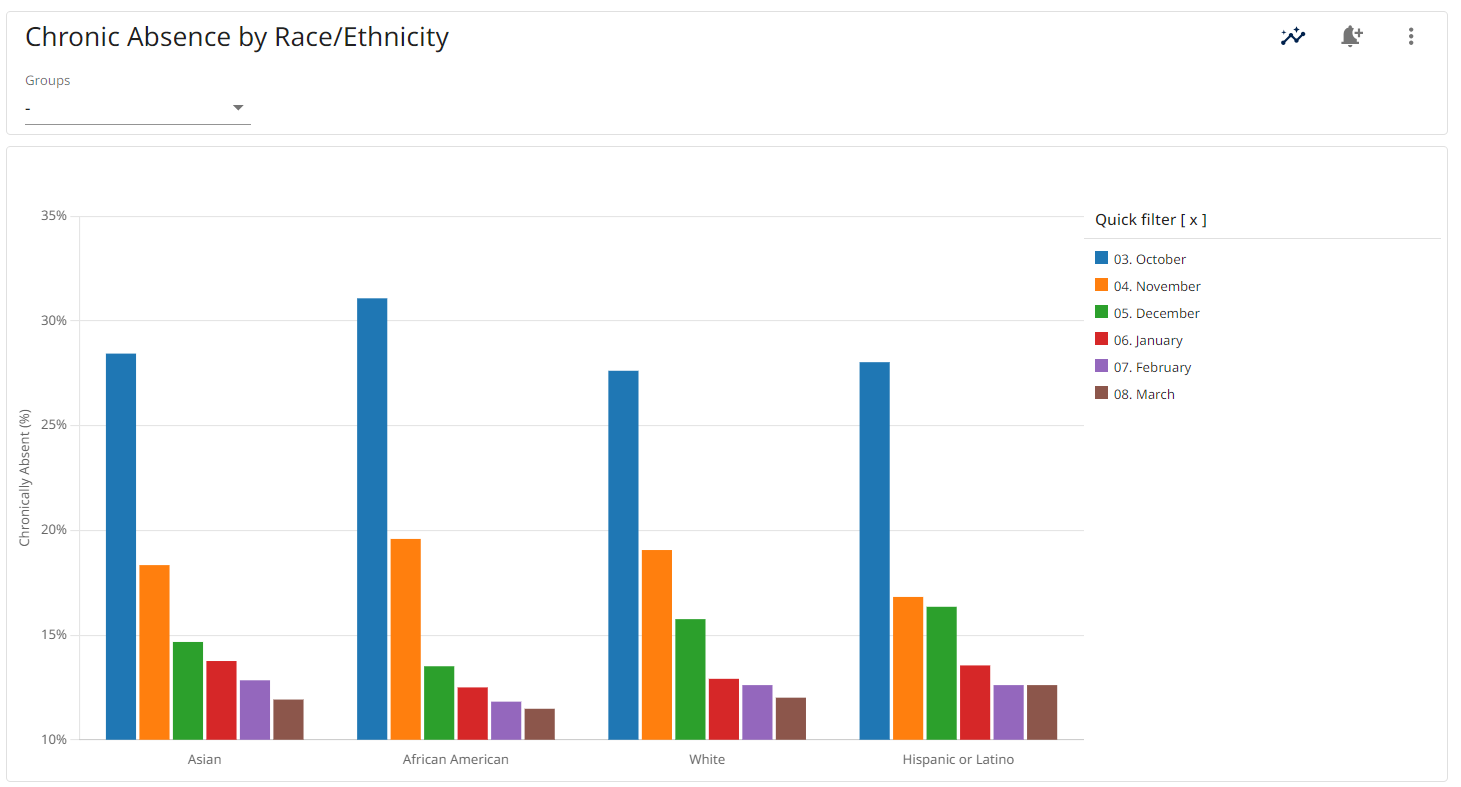
- Monitor at-risk students: Who should you be keeping an eye on?
- Create tables or lists of students with multivariate risk factors – behavior issues, low homework completion, below proficient test scores, etc.
- Create tables or lists of students who are nearing important thresholds (missing a certain percent of days, or number of days) or whose attendance has recently fallen unexpectedly.
- Implement real-time alerts for students who show early signs of potential chronic absenteeism.
- Share the data with teachers, principals, intervention specialists, counselors – people who are working closely with students and know them well.
- Share the data with parents and students.
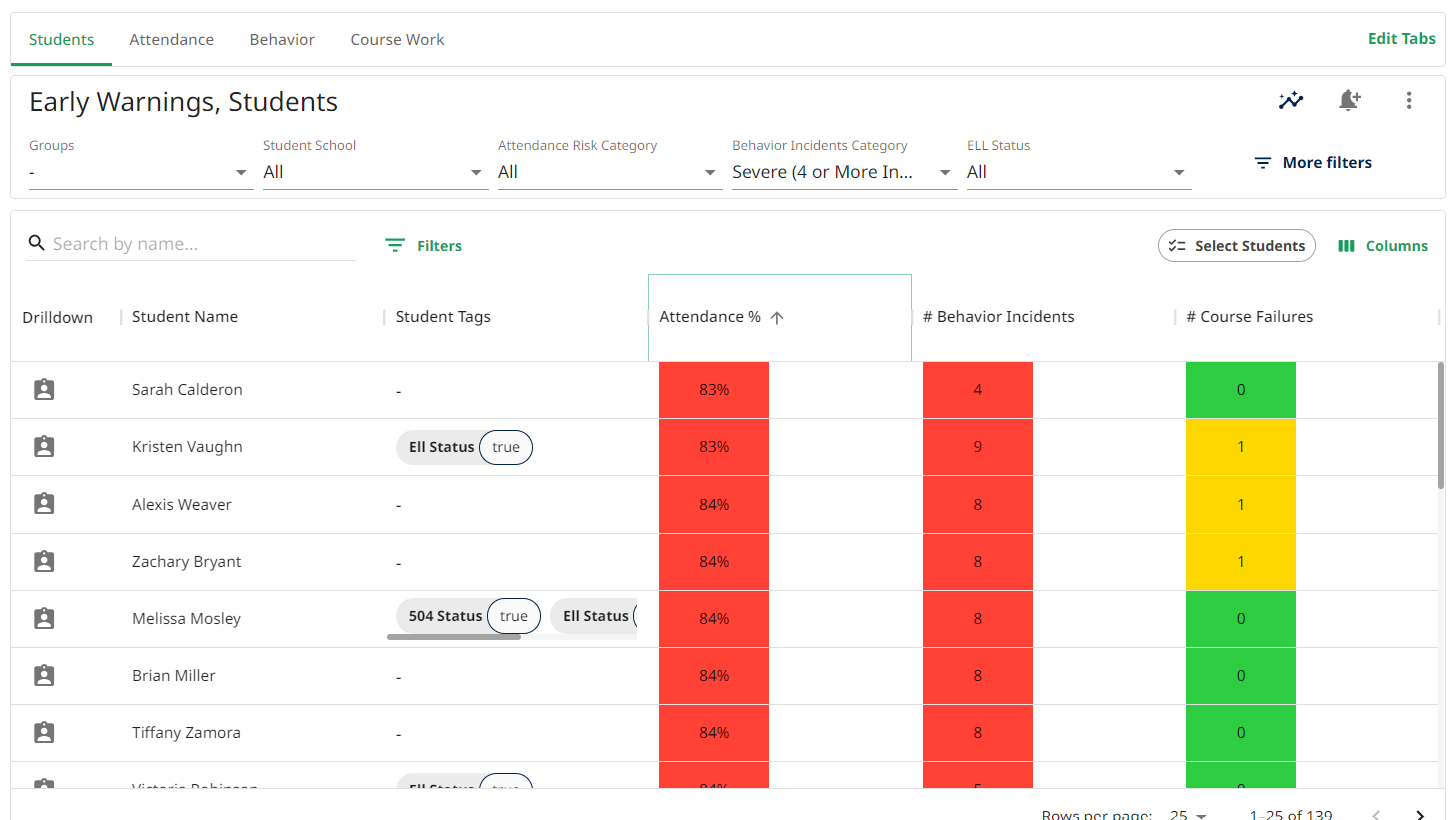
- Understand contributing factors: What is causing absenteeism in your district?
- Analyze survey data on reasons students are missing days.
- Join survey data from students and families with their attendance metrics to find connections between SEL/mental health and absenteeism.
- Analyze behavioral data alongside attendance to identify if specific behaviors correlate with absenteeism.
- Analyze attendance data to find patterns, such as spikes on days before holiday breaks and major events.
- Look at a breakdown of unexcused absence types.
- Join student home location data with bus routes and attendance data to see if travel times or transportation issues are important.
- Study the influence of peer networks on attendance, identifying if students with high absenteeism influence others.
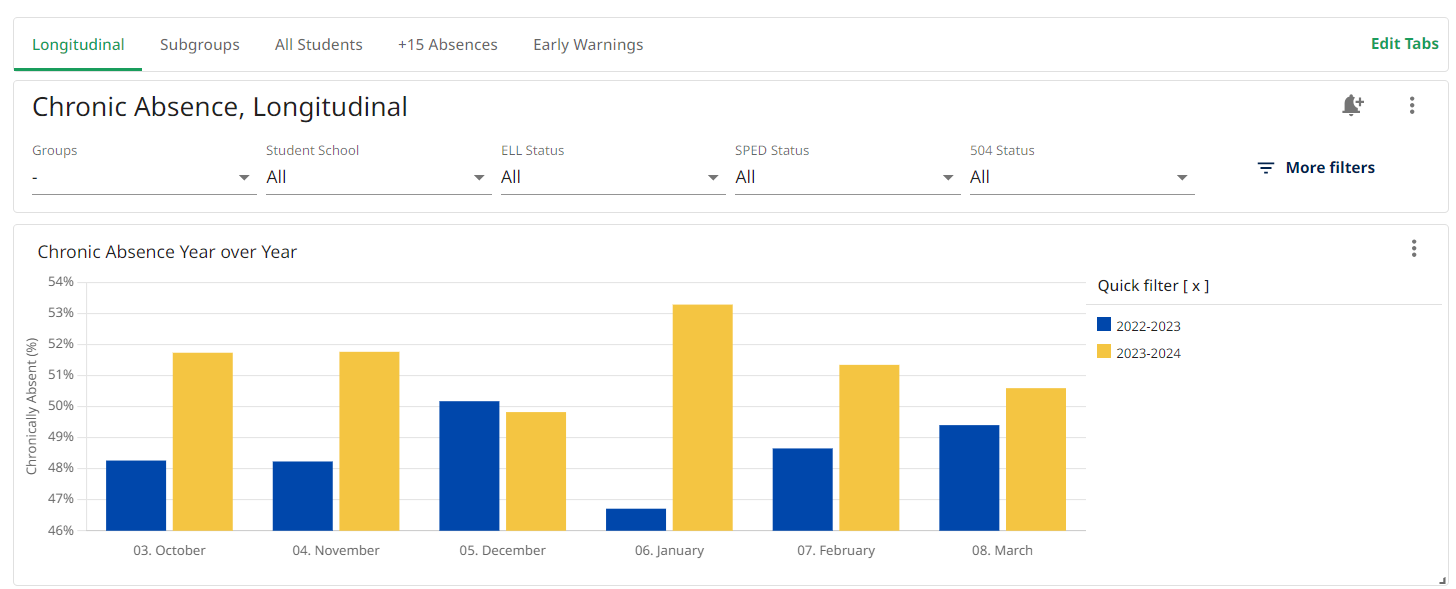
- Highlight consequences: What effects do you see absenteeism having on students and staff?
- Combine attendance data with assessment data to show correlations with academic performance.
- Combine attendance data with graduation rates and postsecondary outcomes to identify longer-term effects.
- Absenteeism can affect everyone else, as teachers use up instructional time to help students catch up on missed material. This can take a toll on both teachers and other students with regular attendance. Take a look at classes with disproportionately high attendance to see if there are negative effects in your district.
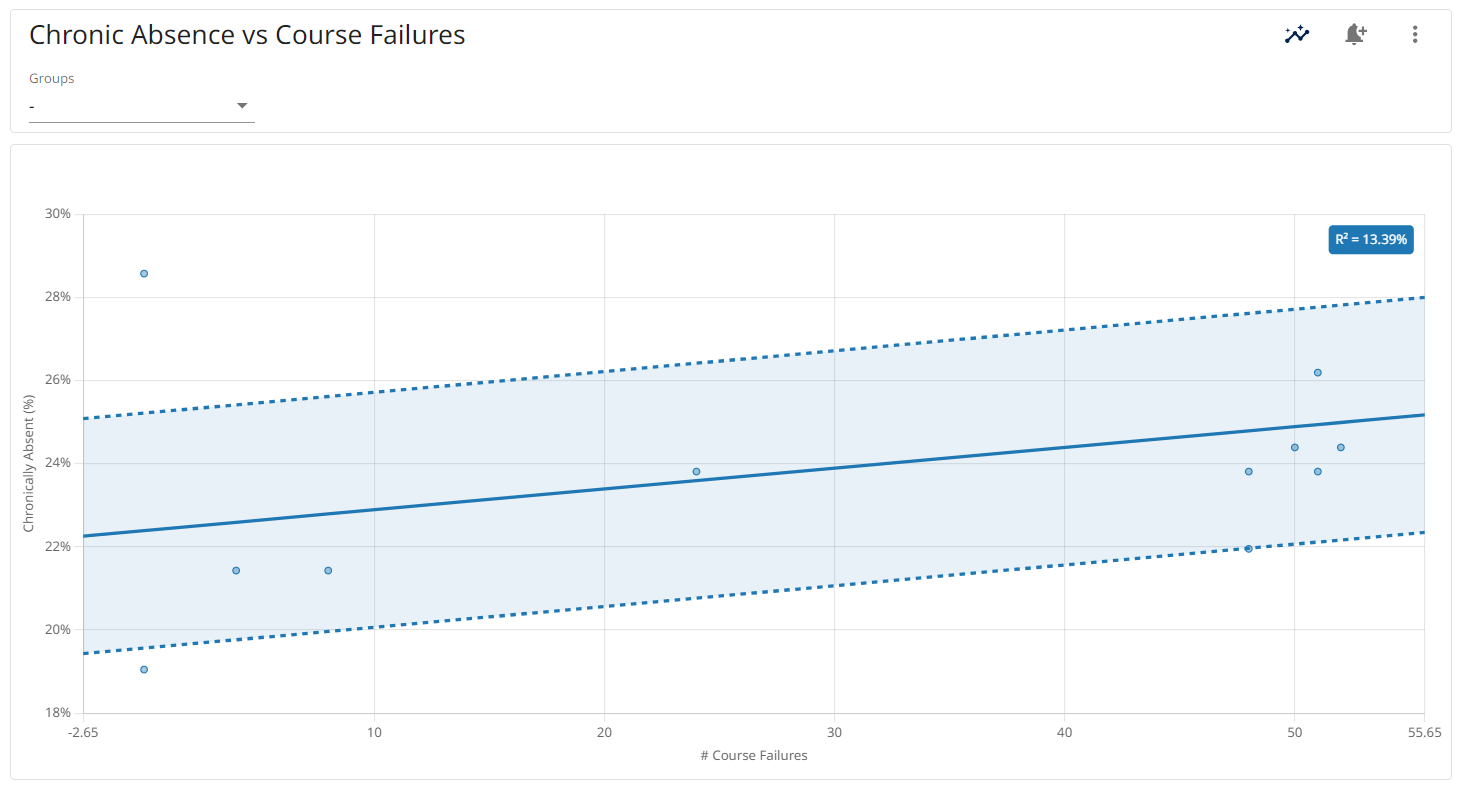
- Evaluate intervention and policy impact: What is working? What is not working?
- Merge intervention data with attendance data to evaluate the effectiveness of your strategies. Focus on growth/change as well as just a point in time. Do more of what works and less of what doesn’t.
- Experiment with new interventions and measure the outcome(s).
- Conduct surveys at two different points in time and look at the changes.
- Do a pre- and post analysis on the impact of policy changes (e.g., revised attendance policies or an incentive program) on attendance rates.
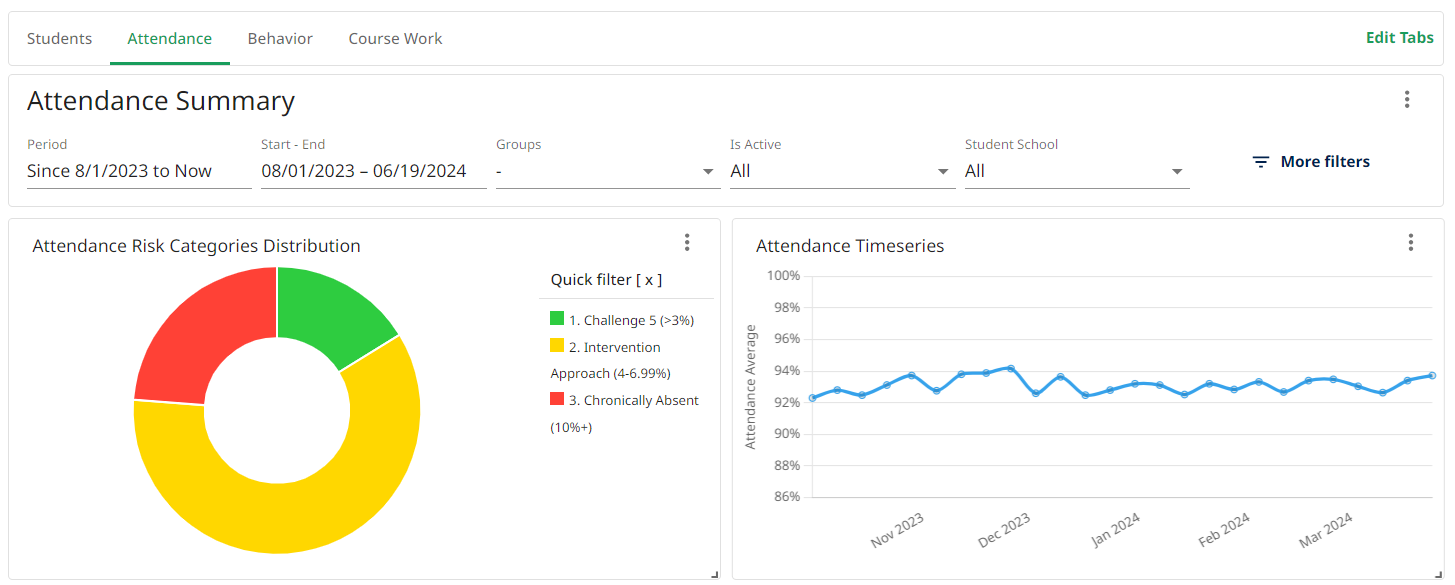
Combating chronic absenteeism requires a comprehensive, data-driven approach that addresses the root causes and implements targeted interventions at multiple levels. By understanding the diverse reasons behind absenteeism and employing a range of strategies, school district administrators can make significant strides in improving attendance and, consequently, student achievement. The key is to adopt a holistic approach that combines clear policies, effective communication, targeted interventions, and the strategic use of data and analytics. Reach out to our team at Schoolytics to learn more about how we support districts with data and reporting around attendance and chronic absenteeism.
Related Articles

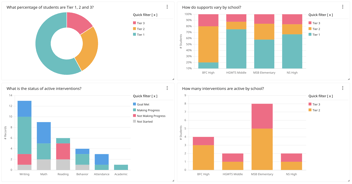
Enhancing MTSS with Student Data: A Comprehensive Approach
A well-implemented Multi-Tiered System of Supports (MTSS) framework is a key tool for schools and...

The Power of a Comprehensive Student Profile
In today’s education landscape, schools are expected to personalize learning, support every...

